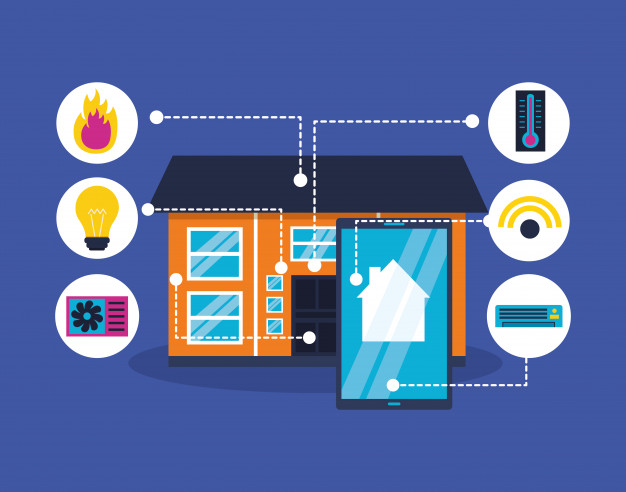Featured
Home automation System Using Wi-Fi modules
Offer end in:
₹0 - ₹0 ₹0 / ₹0
Description
Ask For Price |
A Home Automation System using Wi-Fi modules allows you to
control and monitor various household devices and systems remotely through a
Wi-Fi network. This technology enhances convenience, energy efficiency, and
security in your home. Here's a detailed description of how it works:
Components:
- Wi-Fi
Modules: These modules, such as ESP8266 or ESP32, enable communication
between your home automation devices and your Wi-Fi network. They connect
to your home router to access the internet and allow you to control
devices remotely.
- Smart
Devices: These include a variety of smart appliances and devices, such
as smart lights, smart plugs, smart thermostats, smart locks, security
cameras, and more. These devices are equipped with Wi-Fi connectivity and
can be controlled through a mobile app or voice commands.
- Central
Hub or Controller: Some home automation systems incorporate a central
hub or controller that acts as a bridge between your Wi-Fi network and
smart devices. The hub may use Wi-Fi, Zigbee, Z-Wave, or other
communication protocols.
- Mobile
App: A mobile app is used to control and monitor your smart devices.
You can install the app on your smartphone or tablet and use it to set up,
schedule, and control various devices.
- Voice
Assistants (Optional): Many home automation systems can integrate with
voice assistants like Amazon Alexa, Google Assistant, or Apple HomeKit,
allowing you to control devices using voice commands.
Working Principle:
- Device
Setup: Smart devices are connected to your Wi-Fi network during the
initial setup. This usually involves scanning a QR code, following
app-guided instructions, or manually entering your Wi-Fi credentials.
- Mobile
App Configuration: You use the mobile app to configure and customize
the settings for your smart devices. This includes naming devices, setting
schedules, creating automation rules, and managing user access.
- Remote
Control: Once your devices are set up, you can remotely control them
using the mobile app from anywhere with an internet connection. For
example, you can turn off lights, adjust thermostats, or lock/unlock doors
when you're not at home.
- Automation
and Scheduling: You can create automation rules and schedules to make
your home more efficient. For instance, you can schedule lights to turn on
and off at specific times or set up rules like turning off lights when
motion is no longer detected in a room.
- Voice
Control: If your system is integrated with voice assistants, you can
use voice commands to control devices. For example, you can say,
"Alexa, turn off the living room lights," and the lights will
respond accordingly.
- Security
and Monitoring: Some systems incorporate security features, such as
remote camera monitoring, doorbell cameras, and smart locks for enhanced
home security.
Advantages:
- Convenience:
Remote control of devices and automation for a more convenient lifestyle.
- Energy
Efficiency: The ability to monitor and control devices remotely can
lead to energy savings.
- Security:
Enhanced home security features, including remote monitoring and smart
locks.
- Scalability:
You can add and integrate more smart devices as needed, expanding your
home automation system over time.
Limitations:
- Initial
Setup: Setting up and configuring devices can be time-consuming.
- Dependency
on Wi-Fi: Reliable Wi-Fi connectivity is essential for the system to
function correctly.
- Cost:
Smart devices can be more expensive than traditional ones.
- Security
Concerns: Connected devices may be vulnerable to cybersecurity
threats.
In summary, a Home Automation System using Wi-Fi modules
offers homeowners the ability to control, monitor, and automate various aspects
of their home, enhancing convenience, energy efficiency, and security. It
allows for the integration of smart devices and provides control through mobile
apps and voice commands.


